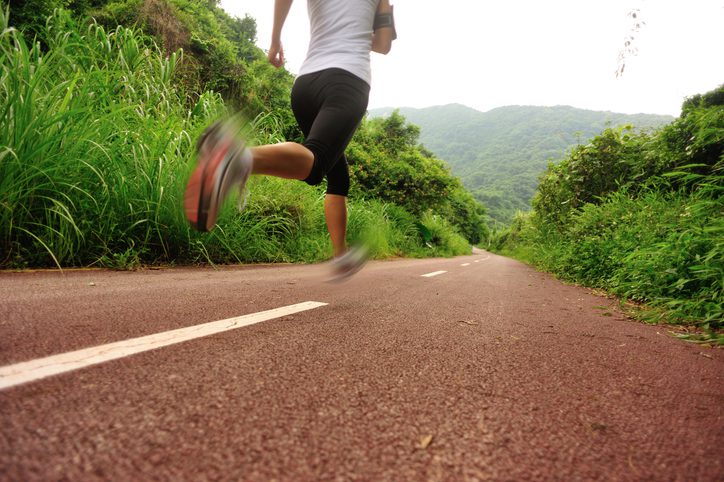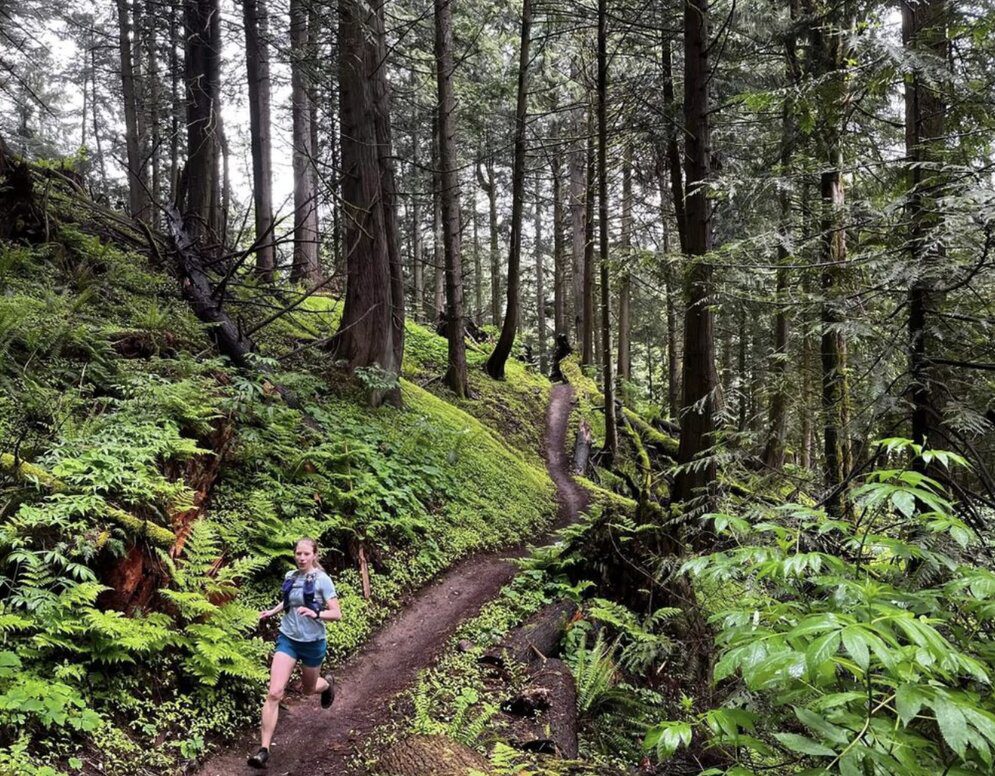3 ways to become a downhill running powerhouse
Boost confidence and become a more efficient runner (even on the flats) with these downhill running tips

Downhill running seems simple, but anyone who has had to tackle some fast descents during a race knows the toll it can take on the legs (and how challenging it can be to keep from zooming out of control). Heading into the downhill sections of a race with confidence and stability can help you speed ahead of the competition—but you need to be cautious in your approach, to stay injury-free.
Running downhill generates more force than running uphill or on a flat surface and puts more pressure on your muscles and joints. Often, runners will hit the downhill too fast or too hard, and they may pay for it later in the race. There are techniques for running downhill properly that will help you avoid injury and improve your leg turnover and speed.

Gravity is your friend
To navigate downhill terrain safely and efficiently, focus on maintaining a consistent and controlled stride—and let gravity do some of the work. Lean slightly forward from the ankles, allowing gravity to assist your descent (without leaning too far forward, which can lead to loss of balance or overstriding). Keep your arms relaxed and slightly wider for balance, and engage your core to stabilize your body as you descend.

Control your stride
Efficient downhill running requires shorter, quicker strides to control speed and minimize impact. Aim to keep your stride short and light, landing with your foot under your body, rather than out in front, to allow for better shock absorption. Increase your cadence (stride turnover) to match the steepness of the descent, allowing you to maintain control and reduce the risk of muscle fatigue or injury.

Look ahead and pay attention
Resist the temptation of looking down at your feet—keeping your gaze forward, to stay aware of what’s in your path, allows you to adjust your stride and pace when running toward roots or uneven terrain. Choose your foot placement carefully, opting for the smoothest and most direct path when possible. Avoid braking excessively by landing softly and allowing your momentum to carry you forward. Staying light on your feet will allow you to react swiftly to changes in terrain and maintain control throughout the descent.
With a bit of practice, downhill running can be a skill you pull out of your back pocket that allows you to confidently stride ahead of the competition. Even if your race is flat, incorporating some downhill running into your training schedule will make you a faster, more efficient runner. Just like any speed session or harder workout, remember to take a recovery or very easy running day after a downhill training workout.


